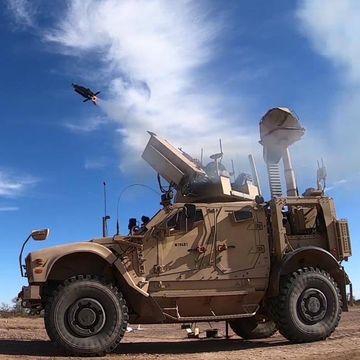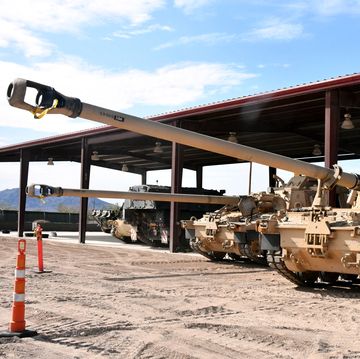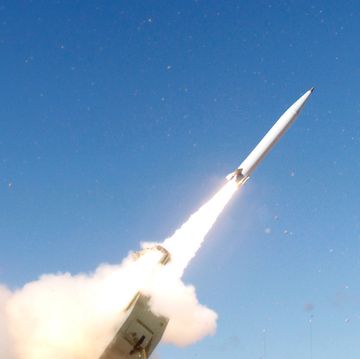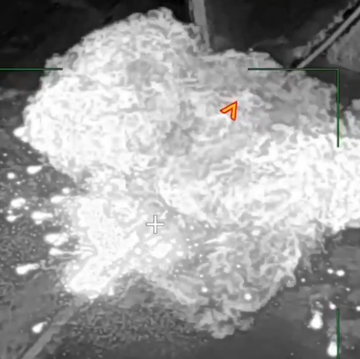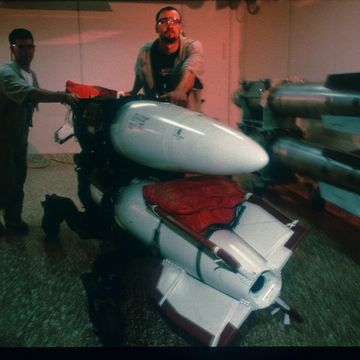What got you interested in writing a book about the AK-47?
Several different interests and threads in my life came together as I set out: my experience as an infantry officer in the Marines, where I studied military history and tactics while I commanded an infantry platoon and a company; my years covering terror and conflict for The New York Times; my assignment to Moscow as a newspaper correspondent. But the real spark flashed after David Rohde (of the Times) and I found reams of Al Qaeda and Taliban records in Afghanistan in late 2001. We brought the materials back to New York, and as we grasped what they said, we realized from the training notebooks that students at Afghan insurgent and terrors schools were all receiving the same opening class as they began their coursesan introduction to the Kalashnikov rifle. These weapons were everywhere and having palpable effects on security, stability and how wars were fought, and they were endlessly assuming surprising new meanings. We wrote a little bit about this, and a former professor of mine contacted me and said, "You know, you really ought to look into this more deeply, and consider a book." That was almost a decade ago. I went to work.
How difficult was the book to research?
The research took many forms and presented many problems. I wanted to put the Kalashnikov in a fuller context and show its place in a larger evolution of automatic infantry arms and shifts in tactics and war fighting. So I had to go back to the beginnings of rapid-fire technology and start my clock from there. This meant years of archival research and tracking down old and out-of-print books and trying to gather materials for lively profiles of people long dead and of weapons and tactics no longer in use.
You could call that traditional historical research, and it in itself took me around the world and into several archives and libraries in the United States.
But that was only part of it. I bounced from country to country, trying to enrich my understanding of how ground war evolved and all the while chasing after all manner of charactersthe first people to use or capture Kalashnikovs, the people who sell them illegally or legally, the terrorists and insurgents who wielded them, the conventional soldiers who train with them or face them in fights, the people who have designed or manufactured them. I wanted to open the book in 1949, the year the Soviet atomic program and the mass-production of the AK-47 came together as a fated pair, and this meant traveling to ground zero in Kazakhstan for the detonation of Stalin's first atomic bomb and researching the blast and touring the crater. I sat in on Kalashnikov training in Iraq, Afghanistan, the United States and Russia; I walked scores and scores of combat patrols and saw Kalashnikovs used by both sides and closely observed, in firefights and through reconstructions, how the Kalashnikov has been adapted tactically by various forcesChechen and Ingush terrorists, Afghan government soldiers and Taliban guerrillas, Russian cops and Uzbek state security agencies. I interviewed victims of gunfire, examined medical records, sat in on hospitals and aid stations and beside medics in the field as they worked. At times I was chasing for months after a single interview, and I spent years trying to get the U.S. government to locate, retrieve and release formerly classified records (this was an especially slow and frustrating fight).
Over the course of eight years I gathered an interview-by-interview, trip-by-trip, document-by-document accumulation of materials, notebooks, books, video footage and images, classified records and field reports, until my inhalation filled a garage. Then I began to write. I still often felt like no matter how much I had, I needed more. The subject is so sprawling that my gathering never seemed to be enough. Maybe this is what obsession looks like.
During the course of your research, did you get to meet or talk to Mikhail Kalashnikov?
I met General Kalashnikov several times. He was a fascinating man and a very complicated figurea master of navigating the Soviet system and its aftermath. He is often portrayed as a poor and simple peasant who, through sheer inventive genius, designed the world's most successful automatic arm. But this is an almost absurd distillation, the carefully spun fable of Soviet propaganda mills. He's actually something much richer: a small part of an enormous machine and a most useful and interesting lens with which to look at decades of often dreary and sometimes terrifying Soviet life. He's also charming, beguiling, clever, funny and both intensely proud and publicly humble at the same time. The legends around him are insufficient at best and grossly inaccurate at worst. He's quite a man and a challenging character to render.
Why is so much about the development of the AK-47 still shrouded in secrecy?
After the weapon was fielded, the Soviet Union invested heavily in an official version of its creation. This was not long after the purges, when many prominent Soviet citizens and public figures had been liquidated. A new crop of heroes was being put forward by the Kremlin and the Communist Party. Mikhail Kalashnikov fit this movement perfectlyhe was, by the official telling, the quintessential proletariat success story, a wounded vet with limited education and almost no training who conceived of this weapon and relentlessly conjured it into existence. The truth was more complicated. But this party-approved version was endlessly repeated in official channels, and one result of the propaganda was that many other participants in the weapon's design were sidelined and kept silent. One important figure was even arrested, charged with anti-revolutionary activity and sentenced to hard labor. After the Soviet Union collapsed, some of these other men and their accounts began to circulate. But the archives have never fully been opened, and the myths have hardened into something that can feel like fact. We do know much more than we used to, but the full story, in crisp detail, remains elusive, and the Communist version still stands in many circles. Propaganda is a pernicious thing, and the Kalashnikov tale is an example of just how effective it can be.
At times, it seems like you're making the argument that the development of the AK-47 is equal toor maybe even a bigger deal thanthe development of nuclear weapons, which were happening in the Soviet Union at around the same time. Why is that?
The two weapons were designed simultaneously, and urgently, in Stalin's Soviet Union, and they worked together quite well. Atomic (then nuclear) weapons served to freeze borders in place and prevent total war, while the Kalashnikov percolated from state to state, army to army, group to group and man to man and became the principal firearm used for modern war and political violence, in all of its many forms. The West fixated, understandably and naturally, on nuclear weapons and their risks and developed an enormous intellectual, diplomatic and material infrastructure to deal with them and work against their proliferation. Meanwhile, the Kalashnikovand many arms that complement it in the fieldwere doing the killing and still are. I sometimes ask people, when we talk about the big-ticket weapons as opposed to the weapons that actually see the real use: How many people have you known, or even heard of, who were killed by a submarine? How many by a nuclear bomb? The Kalashnikov, in actual practice over the past 60-plus years, has proven much more deadly than these things. But it gets a lot less official attention.
Why did the Soviet Union think a lightweight, automatic rifle was needed?
The Soviet military had faced the world's first mass-produced assault riflethe German sturmgewehr, or storm riflein battles on the Eastern Front in World War II. It was impressed and wanted its own version. The AK-47 was fundamentally a conceptual copy of the German weapon. The Soviet Union was exceptionally skilled at copying its enemies' ideas and was proud of its espionage and intelligence successes in obtaining enemy equipment and grasping the significance and utility of its opponents' gear. In this case, it wanted an equivalent: a compact rifle, with modest recoil and weight, that could be fired on automatic or semiautomatic and that used smaller ammunition than the rifles of its time. Some people think of the Kalashnikov as revolutionary in design and idea, but it was evolutionary. In hindsight, it marked a natural step in a progression that had been under way for decadesa weapon midway between the large rifles and small submachine guns of the era, the ultimate compromise arm. This had many benefits, including that because the weapon used lighter, lower-powered ammunition, it would be less expensive to manufacture and supply and less burdensome, and each soldier could carry more cartridges per combat load. It all made military sense, and the Soviet arms-design community understood this immediately and went to work on its conceptual knockoff of the pre-existing German arm.
The AK-47 was designed through a contest. Why did the Soviet Union take that approach?
That was how the Soviet Union designed much of its suite of military equipment. Rival teams were given a set of specification and deadlines, and through a series of stages the teams presented prototypes, and contest supervisors winnowed the field. Stalin liked these contests. They created urgency and a strong sense of priorities, and they helped speed along development. This was also a system without patents or even firm notions of intellectual property, at least as we know them in the West. So design convergence was part of the processthe teams and the judges, as time passed, could mix and match features from different submissions. Think of a game of Mr. Potato Head. Now imagine a similar game, in which many different elements and features of an automatic rifle are available to you, and more are available at each cycle, and you can gradually pluck the best features and assemble them into a new whole. In some ways, this was the process here.
What features were they looking for, and why did they want those particular characteristics in a rifle?
They wanted a simple, reliable, lighter-weight weapon that could fire automatically or a single shot at a time and that would use a specific intermediate-size cartridge that the Soviet Union had hastily designed in 1943. The reasons behind this desire were rooted in something the Soviet Union got right. Soviet intelligence officials had captured Nazi Germany's new assault rifles, and they understood that these were both a new class of weapons and the rifles of the future. The advantages were obvious. The Soviet army was ordering up a standard weapon with modest recoil but awesome firepower at short and medium ranges, and that would subject soldiers and logistic trains alike to lighter ammunition burdens. It would also be easy to clean and usevaluable characteristics for a rifle to be issued to peasant conscripts across the socialist world.
Why was the development of the rifle such a secret?
The Soviet Union was reflexively secret, even paranoid; the importance of secrecy was ingrained in its culture and amplified by both the recent experience of World War II and by the beginning of the Cold War. The union saw its enemies ringed round and was deeply startled by the United States' development and use of the atomic bomb. Its arms-design centers were utterly closed as the work proceeded. Obviously, though, complete secrecy could not holdthe designers were at work on an item that would be issued to millions of pairs of hands. The physical characteristics of the rifle would not long remain unknown, because the rifle would with time become as commonplace as a conscript's boots. But at first, silence and secrecy reigned.
Can you talk a little bit about the controversy surrounding the AK-47's development?
There are many lingering controversies, most of them related to the fact that the Soviet Union never quite told the truth about the weapon's origins and created a fantastic proletariat parable in its place. Mikhail Kalashnikov participated in this official yarn, with all of its redaction and lies. He obviously benefited from it in terms of material reward and public stature, and he has clung pretty doggedly to much of it in the years since. This is not to say he was not involved in the weapon's creation; he was intimately involved. But this was a sprawling state-directed R&D program, and his role was smaller than the myths would have you believe.
The controversies surrounding the development have been many. There are allegations that his early weapon was disqualified and he used insider influence among the judges to be allowed to continue as a contestant, that he lifted ideas from another contestant, that his memoirs took credit for other people's work, and even that the German weapons' designer most responsible for the sturmgewehr was also behind the AK-47 development and participated in its development while living as a prisoner of war in the same arms-factory town where Kalashnikov worked. Some of these claims and allegations are more credible than others. But what is clear is that the weapon came about not through individual epiphany or entrepreneurship but through state-led group design. It was the product of many hands and the output of collective work. It was not the brainchild of a single man. Far from it.
One of the things I wasn't aware of at all was how the United States was so behind the times when it came to machine guns and assault rifles. Why weren't they trying to create something similar?
The Pentagon's arms-design circles were insular and informed by parochialism and biases. One of the biases was an affinity for larger, more powerful rifles. These weapons were unwieldy and, compared to assault rifles, slow to fire. But the romance with long-range marksmanship (which is part of American frontier legend) and the resistance to weapons designed elsewhere (including the Kalashnikov) led to the Pentagon misapprehending the biggest breakthrough in infantry arms since the advent of the machine gun. The Pentagon's arms designers were dogmatic and saw themselves and their weapons as superior. They missed the significance of the sturmgewehr. They took little notice of the proliferation of the Kalashnikov. They ultimately lost the arms race of their lives.
How did the AK become so widely disseminated, and what about it made it such a ripe candidate for dissemination?
One common misperception is that the AK-47 is reliable and effective, therefore it is abundant. This is not really the case. The weapon's superabundance, its near ubiquity, is related less to its performance than to the facts of its manufacture. Once it was designated a standard Eastern Bloc arm, it was assembled and stockpiled in planned economies whether anyone paid for or wanted the rifles or not. This led to an uncountable accumulation of the weapons. And once the weapons existed, they moved. Had the weapon not been hooked up to the unending output of the planned economy, it would have been a much less significant device. If it had been invented in Liechtenstein, you might have never even heard of it.
How many different versions of the AK-47 are there?
Dozens and dozens. The weapon is best viewed as a platform that has been reworked, touched up, modified and improved by other designers around the world and over several decades. It's worth noting that the true AK-47 was short-lived, and the very acronym "AK-47" is typically used for descendant weapons that are not AK-47s at all. It's a shorthand for an entire family of weapons that are better called "Kalashnikovs."
The M-16 was a pretty horrible weapon in Vietnam, especially when up against the AKs. How would you say it fares against AKs now?
The M-16 had a bungled and flawed introduction in Vietnam, and both the rifles and their ammunition have been reworked repeatedly. It's an incomparably better weapon in 2010 than it was in the early and mid-1960s. I carried an M16A2 for several years in the 1980s and 1990s as a Marine. I never had one jam when firing live ammunition. Comparisons are difficult. If I were still in the infantry, there would be some tactical situations where I might prefer a Kalashnikov, and others where I would certainly rather have one of the descendants of the M-16. Keep in mind, though, that these two families of assault rifles were in many ways designed for very different users. The Kalashnikov's simplicity and reliability make it a much better weapon for entire classes of combatants, particularly those with modest training, education and fighting skills and limited access to material support, because it will usually perform in harsh environments with little maintenance. It's a firearm that is exceptionally well-matched to the conditions of war and skills and habits of many of the people who carry them.
Why doesn't the U.S. use the AK-47 now? It's been distributed by our military in Iraq and Afghanistan.
The United States does use Kalashnikovs, albeit in limited ways. As for the selecting of its standard arms, for issue to its own troops, the Pentagon has its own arms-procurement processes and a fidelity to its own weapons, or at least to weapons of Western design. I can't ever see the Pentagon adopting the Kalashnikov on a large scale. It's one thing to buy and issue the weapons to largely illiterate proxy forces or to forces already carrying Kalashnikovs, which simplifies training and logistics. It's another thing entirely to consider the weapon for wide-scale American military use.
Two other factors merit consideration. First, the Kalashnikov is eminently reliable and incomparably abundant, but it's not a miracle weapon. Nor is it ideal for all uses. It is, for example, stubbornly mediocre in terms of its accuracy at even medium ranges. At the longer ranges common to fighting in arid environments, it's not a good choice. So it might not be the best weapon for the West right now even if the Pentagon somehow wanted to issue them. Second, American arming decisions are tied to NATO and to alliance-wide decisions. Changing rifles is a woefully complicated process. The status quo is a powerful thing.
What would you say is the influence or legacy of the Kalashnikov line of assault rifles?
A discussion about the legacy could fill this page and many more. But a few framing thoughts might be helpful. For the Soviet Union, the AK-47 is arguably the most apt physical symbol of the Soviet period and what it left behind. It was the Kremlin's most successful product, even the nation's flagship brand, and it came into existence through distinct Soviet behaviors and traits. But it was a breakout weapon, and its fuller meaning and deeper legacy lie in its effects on security and war. It leveled the battlefield in many ways and changed the way wars are fought, prompting a host of reactions and shifts in fighting styles and risks. Its effects will be with us for many more decades, probably for the rest of this century, at least. This is perhaps its real legacyas the fighting tool like no other, which we will confront, and often suffer from, for the rest of our lives.








